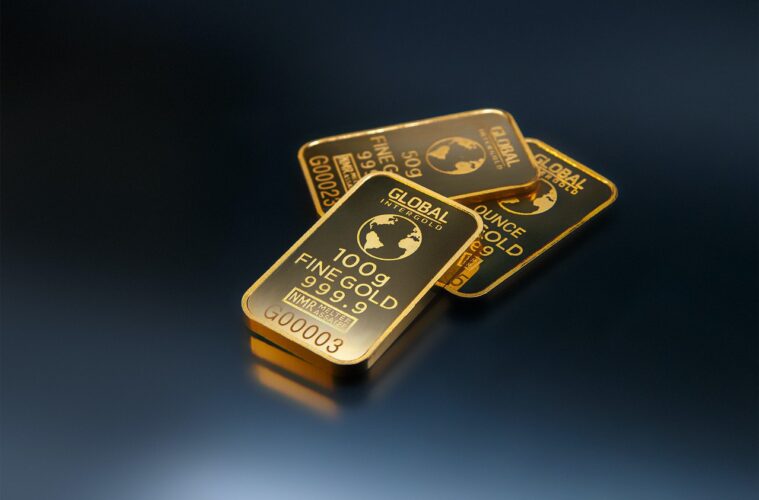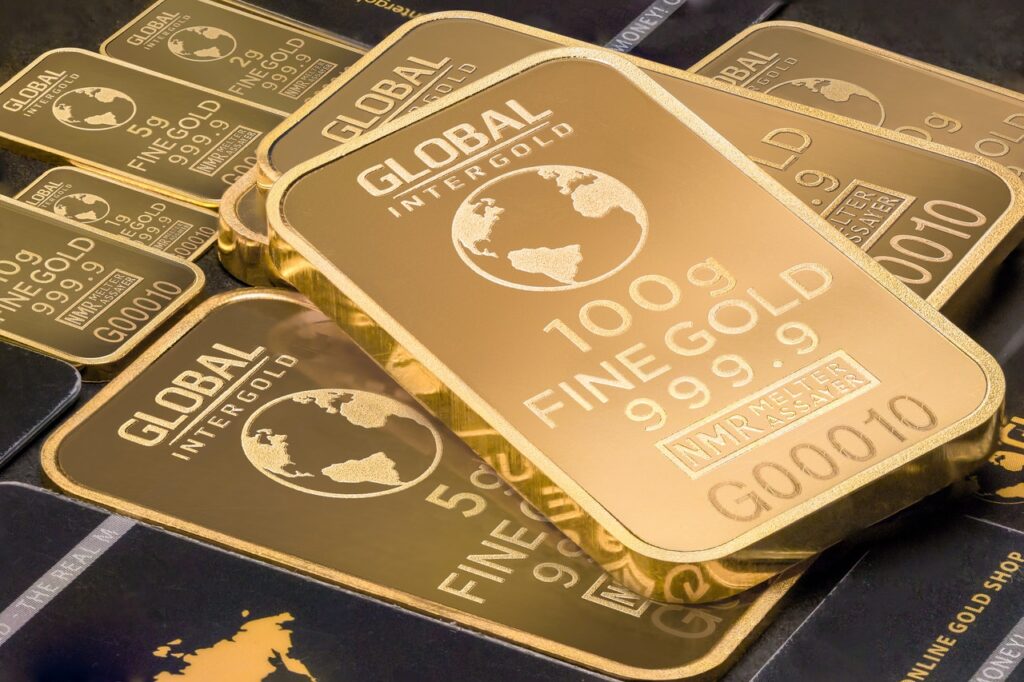Gold is a hard asset that has been linked to money for many years. Before paper money, gold was used to exchange goods and services. Gold can be purchased and stored but is no longer used as a way to make payments in most cases. However, there are still some mints that even today make gold coins for payments.
Digital payment mechanisms focused on sovereign currencies are the method of choice to exchange capital. Gold is not only considered a store of wealth. It is also used as a commodity. Gold is considered fungible, meaning that, for example, gold in the United States is the same as in Australia.
Gold’s popularity
Gold is considered a safe-haven asset. This means that gold is of particular interest when adverse market conditions affect the price of riskier assets. For example, investors might consider purchasing gold to offset the losses experienced by holding equities when stock prices are falling. Unfortunately, the upward trajectory of gold prices might not always qualify it as a safe haven. There are times when the dollar is rising, and since gold is quoted in U.S. dollars, a stronger dollar might lead to a less attractive price for the yellow metal.
When Should Gold Holds its Value?
You should consider the market conditions to decide if gold trading is a viable option at any given time. One question many CFD investors ask themselves is when times are optimal to open a ‘Buy’ deal or go long. Such conditions might arise when investors believe that a potential weakness in output could lead to a decline in riskier assets.
Since markets trade through business cycles, the market environment should reflect the next leg in a cycle.
In the wake of the pandemic, central banks across the globe reduced interest rates to help buoy decelerating growth. Quarantines and lockdown stalled economic output and allowed central banks to reduce borrowing rates to accommodative levels. As demand for goods and services started to bounce back, prices rose in neglected areas during the pandemic.
Higher prices generate the next leg of the economic cycle, where central banks view the runaway inflation pressures as less critical than growth. Central banks began raising interest rates to stem the rise of higher prices. Higher interest rates can stifle growth and create demand destruction. As demand for goods and services starts to decline, riskier assets start to move lower, and the attractiveness of safe-haven assets like gold can capture the attention of investors.
Have Interest Rates Peaked?
Central banks will generally try to reduce core inflation (excluding food and energy) to a fixed level. The Federal Reserve usually targets a core personal consumption expenditures core level of 2%. The Fed might need to raise interest rates to levels above core PCE to accomplish this feat. The core level of the PCE is currently slightly lower than 4.7% year over year. While off the highs seen in March were near 5.22%, core PCE must fall much farther before it reaches the Fed’s target range.
The markets have priced in rate hikes into 2023, with rates starting to top out near 3-3.25%. The market seems to believe that if interest rates reach this level, the decline at the core rate will drop to a level that’s acceptable to the Fed.
What is the Path to Lower Rates?
The path to lower rates is likely a decline in growth, a time when gold trading tends to be most attractive. The unknown is what helps buoy the price of the yellow metal. As the outlook for riskier assets becomes cloudy, investors tend to flock to gold as a store of value to help them diversify their portfolio from some riskier investments.
Unfortunately, generating demand destruction is the only way to stem the price acceleration. If people decide not to purchase goods and services at higher levels, prices will begin to fall.
The peak in interest rates in a sovereign country like the United States will help weigh on the U.S. dollar exchange rate. As the dollar falls, assets quoted in dollars, like gold, can become more attractive. This scenario occurs because gold prices are quoted in dollars, and as the dollar declines, the value of gold in denominations other than U.S. dollars is lower.
Therefore, when you are looking to find a period when gold will become attractive to investors, you might consider periods when uncertainty about the value of other assets starts to rise.
Gold trading online – How Can Gold Be Traded?
There are several ways that investors might want to trade gold. Gold as a safe-haven asset can be purchased as a physical asset that allows investors to store it themselves or at a bank in a vault. There are also ways for an investor to buy gold using a financial product. Some futures exchanges offer gold futures contracts.
Some brokers will also occasionally offer contracts for differencesor CFDs, which are an instrument that provides investors with access to the price movements of gold. Financial instruments like futures contracts, contracts for differences, and even exchange-traded funds provide investors with access to gold price movements without purchasing gold coins or gold bullion.
The Bottom Line
In summary, gold is generally considered an asset that investors might look to when they are concerned that there will be a change in the value of riskier assets. Gold is often a way for investors to diversify their portfolio with an asset that does not usually decline when economic growth prospects decline. Gold is also considered a commodity.
Gold usually outperforms when there is uncertainty. It is often considered a safe-haven asset. Gold is quoted in U.S. dollars and tends to remain strong when the dollar is falling. Gold is more of a store of value today than it is a payment currency. You can trade gold using a plethora of products. You can trade physical gold and store it in a secure location, or you can trade a financial product that has its price pegged to the movements of gold, such as CFDs.


